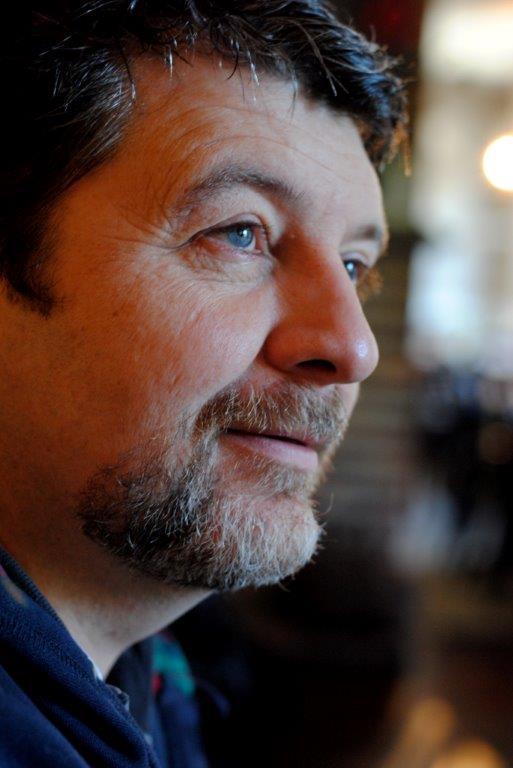Donald Robertson | Stoicism and Modern Psychology
ABOUT OUR GUEST
Donald is a cognitive-behavioural therapist, trainer and writer. He’s the author of six books on philosophy and psychotherapy. The latest, How to Think Like a Roman Emperor: The Stoic Philosophy of Marcus Aurelius, was recently reviewed in The Wall Street Journal and became the #1 best seller in philosophy throughout the US. Donald is from Scotland originally but is now a Canadian citizen, and lives in Toronto. He’s been writing about and lecturing on Stoicism for roughly 25 years and is one of the founding members of the Modern Stoicism organization, a nonprofit responsible for Stoic Week and Stoicon, the international conference.
GUEST LINKS
THINK LIKE A ROMAN EMPEROR: CLICK HERE
WEBSITE: CLICK HERE
YOUTUBE: CLICK HERE
LINKEDIN: CLICK HERE
TWITTER: CLICK HERE
[podcast_subscribe id=”37725″]
– The Stoics taught that there are three types of emotions: good emotions, bad emotions and indifferent emotions.
– GOOD: Pathos can mean both “emotion” and also “suffering” in Greek. Pathos are the unhealthy, excessive or irrational emotions that we feel.
– BAD: Eupatheia are the good emotions we feel that are healthy. The Stoics thought that we should try to exchange our negative emotions (Pathos) with better emotions (Eupatheia).
– INDIFFERENT: Propatheia are the emotions that are indifferent to us. These are things like blushing, sweating, trembling etc. These are involuntary emotional responses that simply aren’t within our control. The wise man, the Stoics taught, would not try to change or push against these emotions as they are simply instinctual/biological responses. Over time they can be tamed to an extent, but trying to change them immediately is almost impossible.
– In our society we take for granted that we have a platonic theory of emotions which is implicit in our way of discussing emotions. This is to say that we distinguish reason and the passions as two separate faculties. The Stoics argued that reason and emotion are intertwined. For example, anger is an emotion that happens as a result of the reasoning that someone has done something wrong. So in other words, we have emotional responses because we are reasoning creatures and we need markers to show us when something is wrong, right, scary, safe etc. For example, if something scares us we will jump. This is a rational response to a scary situation.
– We share the involuntary emotions with animals.
– We confuse the involuntary reactions as the actual emotions. For example, watching a scary movie we might jump, and yet we know we’re safe and as long as we know we’re safe it’s not necessarily fear that’s manifesting, but rather it’s a natural response to scary stimulus – propatheia.
– What we actually want to change is the cognitive emotions – the ones where there is an underlying belief. We change these emotions not by suppressing them, but by questioning the reasoning behind them.
– Cognitive Behavioural Therapy is based on two elements – a) changing the beliefs that lead to negative emotions and b) accepting emotions that are out of our control.
– Living in alignment with nature means many things in Stoicism.
– One interpretation is to live consistently and with integrity.
– We are to align with our external nature and also our internal nature.Internal nature is who you are as a human being. The ultimate question is “what am I as a human being?”- Our unique human nature is to be self aware, to use language and reason.
– The Stoics would argue that it would be better to lose the body than to lose the mind seeing as our mind holds the uniquely human capacities that make us who we are. We identify with the mind so we should take care of our reasoning capacities.
– We have an obligation, as reasoning animals, to grasp the truth and to try and think correctly.
– Your duty as a human being is to achieve wisdom and understanding. Wisdom is thinking clearly and doing whatever you do well.
– External nature is everything outside of us. Essentially, it’s everything that we don’t control – the things that aren’t up to us.
– So we should learn to care more about our own voluntary actions (the things we control about our internal nature) and we should aim to let go of the things we don’t control (external nature).
– Chrysippus taught that we are like a dog tied to a wagon in motion. The fact that we’re tied to the wagon is out of our control, so either you go along with it happily or you live in constant anger and misalignment with the facts of life. To go along with it is to focus on your own internal choices. Chrysippus taught that the fool is always at odds with external events. He’s frustrated constantly and pushes against everything that fate throws his way. The wise man lives in alignment with what happens – not that he agrees with everything but that he is willing to let go of what is out of his control.
– Stoics aren’t passive. They are committed to disciplined action with an emotional acceptance of things that have already happened or that are otherwise outside of their direct control.
– “External” in Stoicism simply means external to your will – outside your control.
– According to Donald, there are 18 distinct psychological practices that the Stoics talked about.
– “A fundamental aspect of most anxiety is that people blur the boundary between what’s under their control and what isn’t, and that they don’t take enough responsibility for aspects of their anxiety that are under their voluntary control, and they try too hard to struggle with and control aspects of their anxiety that are not under their voluntary control.”
– Donald Robertson- People get headaches, backaches, sweating, shaking, and other physical sensations of anxiety. They then think that they need to change or stop these aspects of their anxiety, however these are simply natural and involuntary aspects of the anxiety. So to try and stop shaking, for example, is counterproductive.
– Trying to control these aspects of anxiety is toxic because it changes the way we think about ourselves and our abilities and it leads to even worse physiological responses (because we now know that focusing for long periods tenses the body’s muscles, for example).
– Often the things we do to cope with problems actually add to the problem. – People who suggest that they can’t stop worrying are mistaken. Worrying is within our voluntary control because it comes from the stories we tell ourselves.
– People who suffer from anxiety would be helped to re-learn how to voluntarily control their thoughts and choices.
– We only ever control things by first controlling our own actions and thoughts.
– “Stoicism is for life, not just for Christmas.” – Donald Robertson- Experts suggest that Stoicism is a “sticky” philosophy, meaning it lasts with people for a long time. It’s a philosophy for life, and almost like a religion.
– It matters that people are drawn to Stoicism as a lifelong philosophy. If they want to continue using the principles then they’ll see lasting results. For therapists, this is the holy grail.
– Prevention is better than cure, and Stoicism seems to be a preventative philosophy in terms of helping people to regulate their emotions and move forward in life with courage and contentment.
– Cognitive Behavioural Therapy is used when someone already has a diagnosable problem. Stoicism is used when people want to prevent the problem from happening in the first place.
– Resilience training is an element of CBT, however even this training still requires refreshers every few years. Stoicism offers a much more long term “lifestyle change” approach.
– Routine is extremely important when it comes to long term changes, and Stoicism offers this routine.
– CBT has transformed since it’s early days. People used to believe that if you were to plan your time to allow for more pleasurable activities you would be happier, but we now know that it’s more about planning your times so that you have room for more activities that align with your core fundamental values. It’s about fulfilment, not pleasure.
– People who suffer from depression don’t suffer from a lack of pleasure, but rather from a lack of meaning and fulfilment.
– Stoicism teaches that we should align with our own intrinsic values and nature. This is the path to a satisfactory life. It’s about a quality internal life, not external.
– Virtue is intrinsic value – a quality in your behaviour and actions. This is why people are more satisfied when they live with virtue.
– The Stoics suggested that we should look around and see how so many people are trapped in their desires for things that really don’t matter at all. Things like money, fame, luxury etc are simply a means to an end. It’s your behaviour and personal fulfilment that brings true meaning.
– We look around and see what everyone else wants in life. We then think that that’s what’s good and that’s what we should want. We should only ever want what is real and what is good for us. So we should want virtue – correct actions and correct usage of the things we get.
– A good and wise man will use wealth and reputation to do good things. A viscous and foolish man would use fame and wealth to do viscous and foolish things.
– Logically, then, it can only be moral wisdom that makes indifference worth having, and it can only be vice and folly that makes the use of these indifference harmful and bad.
– The real question is not “what can I get?”, but rather “what would make me proud of myself?”- The Stoics taught that the fool is alienated from himself.
– We’re at odds with ourselves because we don’t even agree with our own values. We constantly go against what we think or know which means we aren’t aligned with ourselves.
– The Cynics would walk backwards along the street or walk into a crowd to symbolise how we all need to start swimming against the tide. Everyone in society has it wrong, and we need to live with virtue.
– The Stoics thought that we need to reconstruct morality in society and start to live based on what’s in our hearts, not just what everyone thinks is good.

